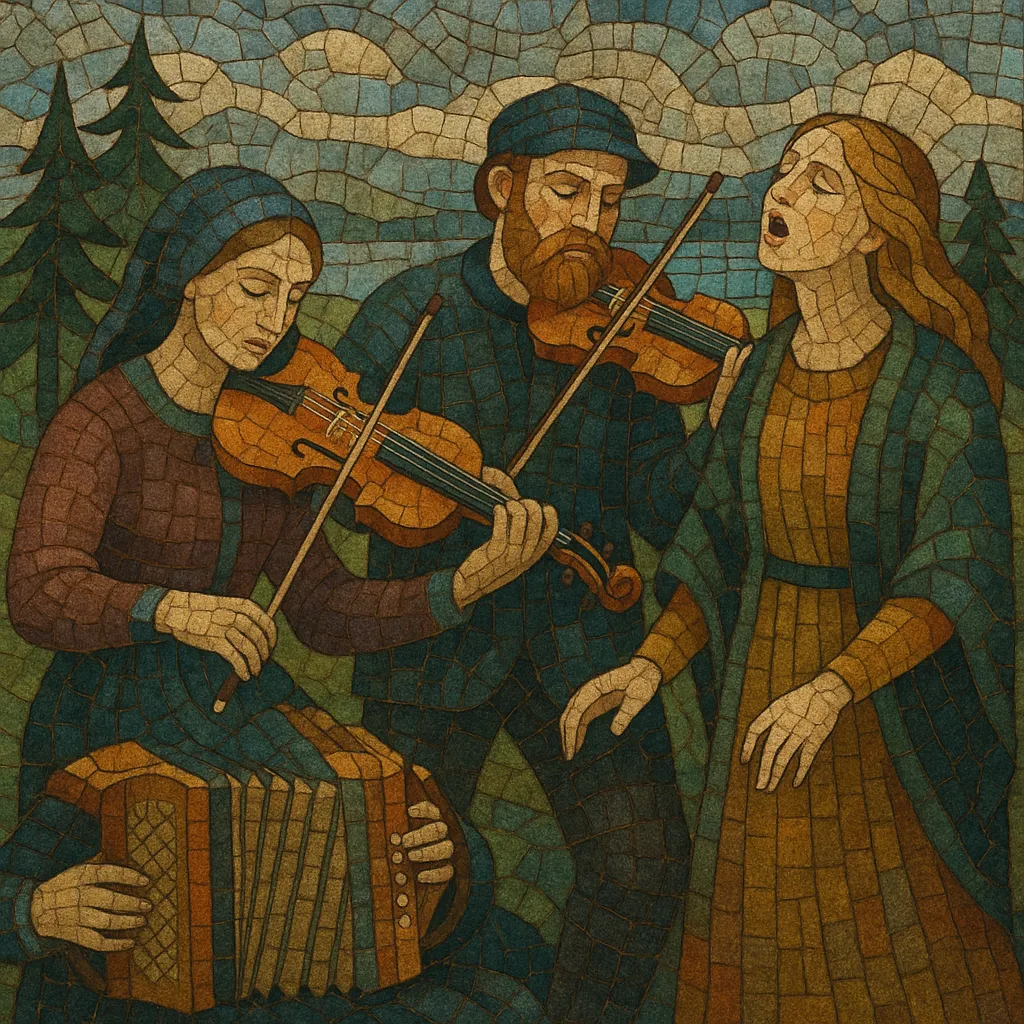Nordic folk music is the traditional and revivalist music of the Nordic region—primarily Sweden, Norway, Denmark, Finland, Iceland, and the Faroe Islands, with close ties to Sámi traditions. It centers on dance tunes (such as polska, springar, halling, hambo, polka and schottis), story ballads, and distinctive vocal styles like runo-singing and kulning (cattle-calling).
Characteristic timbres come from regional instruments: the Swedish nyckelharpa (keyed fiddle), the Norwegian hardanger fiddle (with sympathetic strings), Finnish kantele, various diatonic accordions, jaw harp, willow flute, and goat horn. Melodic language often employs modal scales (Dorian, Mixolydian, Aeolian), drones, and ornamented fiddle lines, with flexible meter and asymmetrical triple-time feels in many local dance traditions.
Modern Nordic folk ranges from historically informed performance to innovative ensembles that blend traditional forms with contemporary harmony, improvisation, electronics, and global influences—while retaining the dance-driven pulse, modal color, and narrative focus that define the style.
The foundations of Nordic folk music lie in pre-modern rural life and communal dance culture. Medieval ballads and work songs coexisted with the ancient Finnic runo-singing tradition and various herding calls (e.g., kulning), creating a repertoire that was both functional and expressive. From the 17th century onward, courtly and Central European dance fashions (notably polska and later polka, schottis, and waltz relatives) were localized across Nordic regions, yielding distinct rhythmic feels and bowing dialects.
The 1800s brought systematic collecting and codification. Folklorists and musicians such as Ludvig Mathias Lindeman (Norway), Nils Andersson (Sweden), and A. O. Väisänen (Finland) transcribed thousands of tunes and songs. This scholarship, aligned with National Romanticism and projects like the Kalevala, helped solidify regional identities and preserved instrument traditions including the nyckelharpa, hardanger fiddle, and kantele.
Urbanization and commercial popular music reduced village dance contexts in the early 20th century. Post‑1960s folk revivals reactivated traditional repertoires through competitions, study circles, and new ensembles. Festivals such as Kaustinen (Finland) and Førde (Norway) became hubs for transmission. By the late 1980s–1990s, groups like Hedningarna, Värttinä, Väsen, and Garmarna modernized the sound with expanded instrumentation, amplified performance, and studio production—yet kept regional rhythms and modes central.
Today, Nordic folk thrives both in historically informed settings and in hybrid forms that intersect with jazz, classical, ambient, and metal scenes. The style’s modal color, drones, and dance grooves have influenced neofolk, pagan and Viking metal, and contemporary world-fusion projects. Conservatories and folk music departments across Sweden, Norway, Denmark, and Finland support a new generation of tradition-bearers, researchers, and boundary-pushing artists.


